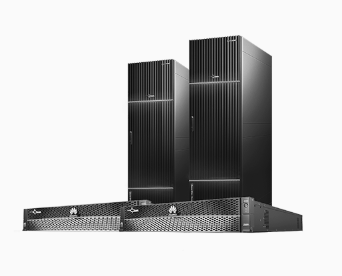ADVERTORIAL: Containerized deployment of applications has become increasingly popular. In fact, the evolution of container technologies has witnessed many ups and downs over the past 20 years.
Containers isolate application runtime environments based on process management. Although server virtualization emerges as another technical roadmap and gives birth to cloud service models such as infrastructure as a service (IaaS) and platform as a service (PaaS), container technologies have always maintained a competitive edge. The launch of Docker in 2013 is a major milestone. Docker allows applications to be packaged once and deployed multiple times without repeated coding. This capability delivers the high-level of application portability needed for agile development and elastic deployment in the Internet era.
The Kubernetes project released in 2015 provided users with a universal container management tool that eliminated the weakest link in container commercialization.
However, commercial container deployment still faces numerous challenges.
Challenges in container storage
According to the user survey report released by the Cloud Native Computing Foundation (CNCF) in 2020, 78 percent of users have deployed or are about to deploy stateful applications in containers in application scenarios like databases, message queues, logs, and data analysis. The report also showed that storage has become a major factor that affects the commercial deployment of containers.

Data source: CNCF SURVEY 2020
– Prolonged data replication: A cluster is typically deployed across at least three nodes, with each node retaining at least one data copy. In the event of a failure, containerized applications can be switched over or a secondary node can be added. This causes time-consuming continuous data synchronization between nodes.
– Lack of service continuity solutions: Currently, most mission-critical enterprise services are stateful applications that require high levels of disaster recovery (DR). However, the container storage interface (CSI) specifications lack comprehensive DR standards and strong support for DR, and therefore are unable to ensure enterprise service continuity.
– Poor adaptation to persistent storage: The native Kubernetes does not support stateful storage. As a result, the use of persistent storage has always been a major challenge in the container field.
Storage selection for container environments
Facing a variety of storage devices, enterprises need to choose the right one for their container environments. Professional storage is recommended for enterprise-level containerized applications, regardless of whether they are stateful or not. This is because professional storage not only facilitates data sharing, cluster expansion, and fault tolerance but also ensures service availability, allowing enterprises to fully harness the potential of container technologies.
Among numerous choices of container storage, NAS stands out in this area as the optimal data foundation for containers.
Enterprise-level NAS storage delivers excellent performance and supports data sharing and access between multiple containers, making it ideal for a wide range of application scenarios, including SQL and NoSQL databases, data analysis, continuous integration and continuous delivery (CI/CD), high-performance computing, content management, data processing, and machine learning.
Huawei’s solution for container storage
As a founding member of the Open Container Initiative (OCI) as well as a founding member and platinum member of the CNCF, Huawei ranks No. 1 in Asia and No. 4 in the world in terms of contribution to the Kubernetes community. Huawei is also one of the world’s first Kubernetes Certified Service Providers and has always been committed to promoting container technologies and applications.
To help enterprises better address container storage challenges, Huawei has launched an industry-leading container storage solution that fully adapts to industry CSI standards while also incorporating additional enterprise-level enhancements.

Huawei’s container storage solution
– Huawei CSI: Enterprise-Level Enhancement of CSI Capabilities: In addition to supporting standard CSI functions such as topology, static volume, dynamic volume, ephemeral volume, volume snapshot, and volume clone, Huawei CSI has expanded QoS, multi-tenant, quota, and active-active storage capabilities. Moreover, Huawei CSI has further improved disk scanning and concurrent processing of RESTful commands to achieve efficient provisioning and scheduling of storage resources, delivering 30 percent higher performance of batch container deployment than the competition. Huawei CSI is also compatible with multiple mainstream ecosystems.
– Huawei Container Disaster Recovery (CDR): All-in-One Container Application Backup and DR: As previously discussed, general CSI standards fail to meet enterprise-level DR requirements. So, Huawei CDR has risen to the occasion. This CDR component innovatively uses resource groups to automatically associate container-related resources for an application, achieving application-level data DR and backup. It also works with BCManager, Huawei’s management software for business continuity, to make DR and backup easier and more intelligent.
– Huawei Container Storage Monitor (CSM): Bidirectional Visualization Between Container Applications and Storage Resources: In traditional scenarios, containers and storage resources cannot be effectively associated for efficient management, greatly hindering resource planning and routine O&M. By integrating Prometheus and Grafana, two mainstream tools in the industry, Huawei CSM implements bidirectional visualization between managed objects and mappings and provides a unified resource view to help users simplify O&M.
– OceanStor Dorado: Industry-Leading All-Flash NAS Storage: Finally, Huawei OceanStor Dorado NAS all-flash storage outperforms its rivals by 30 percent in container application scenarios thanks to its cutting-edge features such as the unique full-mesh controller architecture, distributed RAID 2.0+, and smart disk enclosures shared between controller enclosures. Furthermore, it delivers device-, data-, and application-level security and reliability thanks to its end-to-end three-level security and reliability design, one-of-a-kind NAS active-active cluster architecture, and proprietary four-layer ransomware protection solution powered by machine learning and intelligent algorithms. These advantages combine to maintain enterprise service continuity without any data loss, facilitating digital transformation across a wide range of industries.
The best choice for container storage
Huawei OceanStor Dorado has been named a Leader in Gartner’s Magic Quadrant for Primary Storage for 8 consecutive years thanks to its exceptional product capabilities and the overwhelming praise it has received from customers and partners.
Powered by OceanStor Dorado, Huawei’s container storage solution further improves data replication performance, service reliability, and application deployment efficiency in container environments, helping enterprise customers smoothly implement intelligent digital transformation.
This makes Huawei storage the best choice for any enterprise looking at container solutions.
Click here for more information about Huawei’s container storage solution.
Contributed by Huawei.







